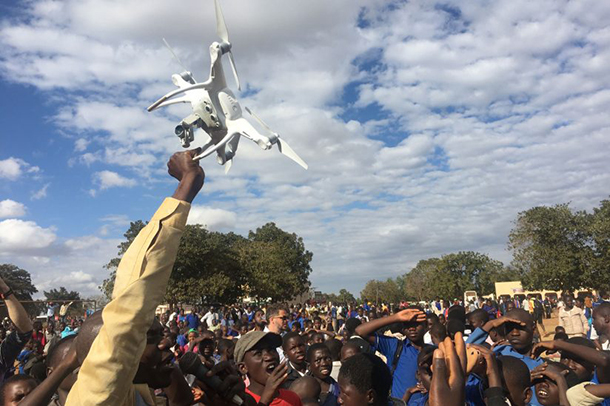Remote-controlled drones — technically known as UAVs, or unmanned aerial vehicles — are becoming more powerful, more reliable and cheaper.
Public health and humanitarian providers in remote areas have begun using the drones to deliver medical supplies and vaccines or provide aerial eyes on a scene, rather than dispatching a human driver, motorcyclist or helicopter pilot.
To help global health providers make effective use of drone technology, USC’s Institute for Global Health will conduct what is believed to be the first online course on the use of drones for health, running from June 4-24.
Participants will have a chance to learn about the different types of drones available; when, where and how best to put them to use; and issues to be aware of. Potential issues include ethical considerations, such as flying medicines across national boundaries and potentially violating the law. The course, which takes about six to eight hours, combines self-paced learning with live online video conferences that let participants interact with experts from USC and around the globe.
“Rwanda is leading the way in this space,” said Shubha Kumar, PhD, MPH, assistant professor of preventive medicine, who was approached by Swedish drone services provider Globhe to co-create and teach the course. “They’ve been able to cut transport times from hours to 15 minutes.”
Drones can offer emergency response
Today’s drones, depending on the model, can carry up to five kilograms of payload and reach sites as far as 160 kilometers away.
Emergency response is also a popular UAV application, Kumar said.
“In Norway, they’ve piloted them to get defibrillators onto the scene, where minutes can make a difference in preventing brain damage. In rural areas, having emergency blood right away during childbirth can also be a life-saver.”
Kumar said that while countries as far apart as Sweden and Papua New Guinea are working with drones, Africa is really leading the way.
“Malawi has a drone corridor,” she said. “And as governments and businesses are pressured to become more socially responsible, we’re seeing more social entrepreneurship emerging: If UPS can use drones to deliver packages, why not use them for social purposes?”
Drones have also been used in Haiti and Nepal to get aerial views of disaster areas for rescue and recovery operations.
Other online global health courses
Kumar, who also directs USC’s Master of Public Health online program, said she strives to make global health education truly global through online education models. She co-teaches other online global health courses, similar to the drones course, that attract students from around the world.
“Through our online courses, they can attend a live session with leading experts around the world, who would never have time to fly here to lead a class.”
The course will give students an overview of how drones are being used today in these areas and related fields.
“But it’s really only starting,” Kumar said. “So we’re excited to be on the forefront of where it’s heading.”
— Paul Boutin


